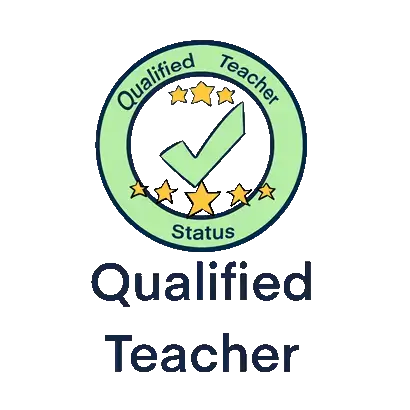The 11 Plus Guide for Reluctant Readers
In this article, Abigail, an experienced teacher and tutor, outlines her top tips to help reluctant readers preparing for 11 plus assessments.
How do I get my child to read?
Throughout my time as a teacher and tutor there is one question I get asked time and time again by parents: how do I get my child to read?
Naturally, parents of children who struggle to engage with the written word worry over how their child will fare during the challenging 11 plus comprehension tests. And yes, the 11 plus does require candidates to be able to read, comprehend and interpret challenging texts in a mature and complex way.
Furthermore, beyond the importance of reading to build vocabulary, knowledge and understanding of cultural, historical and social issues, it is also very important for the 11 plus interview stage. Many students who I have coached for the interview get asked ‘what is your favourite book?’ Now, most can identify one book they’ve read and enjoyed, but if a candidate can engage in a conversation about multiple books they have read: why they like one, why they don’t like the other, differences and similarities, now that is a stand out response!
However, I understand that getting your child to sit down and read Great Expectations can be a challenging, if not a completely impossible task. More often than not, the classics can be difficult to read, the themes tricky to understand and the characters hard to to identify with.
I have run several book clubs for students in Year 5 and 6, and it’s true some books just don’t translate well for today’s young readers. A stand out moment for me was when one group of students gave Mary Norton’s The Borrowers a unanimous 1/10 for being so boring!
Who would have thought?
At the time, not I.
So what can you do?
Granted, there is no magic wand that will suddenly turn your reluctant reader into a vehement bookworm.
However, I have compiled a few tips and tricks over the years to help encourage children to read and, most importantly, equip them with knowledge of classic texts which will help them throughout the 11 plus process.
Tip 1: This may seem obvious, but buy books together and choose a mixture of genres
It’s true, there is often a big emphasis on ‘the classics’ at the 11 plus. Alongside some modern texts, Great Expectations, The Adventure of Tom Sawyer and Little Women have all been titles that have featured in past examinations.
Depending on the school you are applying to, the amount of time you have and the reading level of your child, my advice would be to try and tackle perhaps six to twelve books. (For some really reluctant readers, this may seem a lot, but I will expand on how best to tackle bulk reading with a reluctant child below.)
When selecting books try to pick three well known classics (eg. Oliver Twist, Jane Erye and Wolves of Willoughby Chase), plus a recommendation from a friend, a non-fiction title and a biography. This should give you a variety of different stories, whilst also exposing you child to different genres that could feature in the 11 plus.
Click here for our 11 plus reading list
Tip 2: It is not imperative to read the entire book
I don’t think there are many people who don’t know the story of Oliver Twist. “Please sir, can I have some more?” must be one of the most referenced literary sayings from the last two hundred years.
However, many people (young and old) know the story of Oliver Twist, but have not necessarily read the entire book… I am one of these! This does not mean I don’t know the story well. It just means I have spent my time as a teacher diving in and out of the story picking up references and characters to share with my class, whilst never actually getting around to reading the entire book.
This idea has now become the foundation of how I teach literature to reluctant readers in school and how you can help your child access ‘the classics’. By helping students to understand the characters and story of a text without having to read the entire book, makes those scary three hundred page novels – full of big words and weird character names – much more digestible and memorable.
My advice to you: take it in small chunks…
Tip 3: Take it in small chunks and make links to other books
In theory ‘take it in small chunks’ sounds great, but I can hear you ask, ‘how does this work in practice?’
My advice would be to read and focus on chapters where something exciting or controversial happens, or a section that introduces a particularly interesting character.
A good example of this is the chapter where Mary discovers the Secret Garden (in The Secret Garden). This chapter is relatively short, but has a plethora of language, vocabulary and descriptive techniques to explore. Equally, the wider context of why Mary is in the secret garden (her parents died from cholera and she has been brought to England to live with her uncle) is a great way of exploring the social and historical issues of colonialism and the British Empire in a bitesize and child friendly way.
Furthermore, The Secret Garden is one of many classics where the protagonist is an orphan. Therefore, this is a great time to read sections from and compare to other narratives told from the perspective of an orphan (such as Jane Eyre, Anne of Green Gables and Journey to the River Sea). As you read more sections, paragraphs and chapters together, they will start to take on different meanings and become much more engaging for reluctant readers. It’s also a great idea to compare classic characters and stories to the more modern ones your children might already know.
There is no right or wrong here, just go with what engages your child the most.
Tip 4: Watch the film (… even before you read the book!)
As we have all grown up with the belligerent rhetoric: ’you must read the book before you watch the film,’ when I suggest to parents watching the film before reading the book, this is often met with confusion and controversy.
However, I would say for those who struggle reading, watch the film first and then read the book.
This will help students visualise characters better, traverse the more complicated descriptions, as well as work out the more challenging themes and plots. Once they grasp this, the more nuanced and detailed language of the text will be far more accessible when you read it.
Films can be a real asset in bringing a book to life for those who struggle to engage with the written word – so use them!
Hopefully these tips will make reading for your child more interesting, relevant and easier. And you never know, this might spark an interest in literature that your child didn’t have before… you never know!









Start the discussion!